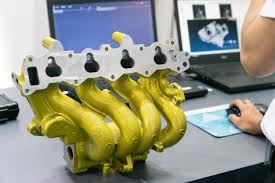WELCOME TO THE REVERSE ENGINEERING
Reverse Engineering can also be called back engineering or backward engineering. The process of deconstruction of an artificial object to understand its design, architecture, code, or knowledge extraction from the object. Reverse engineering is applicable in the fields of mechanical engineering, computer engineering, electronic engineering, software engineering, chemical engineering, and system biology.
The origin of reverse engineering is the analysis of hardware. The goal of reverse engineering is the redocumentation of the legacy system. When a competitor product is reverse engineered, the aim is not to copy but to understand the competitor analysis. The information extracted to decide development, graphical representation of code, alternate view of the source code, which helps to detect, fix errors, or bugs. This can also help to cut down the time required to understand source code, so the overall cost for the development is reduced.
FROM OUR GALLERY




Reach Us For REVERSE ENGINEERING TECHNOLOGY.
The process of reverse engineering involves three different stages. They are Implementation recovery which helps to learn about the system or software or application and the basic model can be prepared. The second stage is designed recovery helps to understand or undo the basic structure. The final stage is analysis recovery to remove errors in the model.
The malware developers or engineers are commonly used, people. They use reverse engineering techniques to fined h bugs to build the new virus that can exploit the system/s vulnerabilities.
Reverse engineering helps to create interoperable products, techniques understanding, improves the understanding of source code for improvement and maintenance. The uses of reverse engineering are the interfacing helps when a system or software is required to interface with others and how the communication is established. Interoperability is another advantage of reverse engineering. The prototype research helps in understanding the competitor's research mechanism. Product security analysis to examine how a product works by determining the specifications of components to estimate the cost. Competitive technical intelligence understanding, reusability, or the recreation of the product with different techniques.

